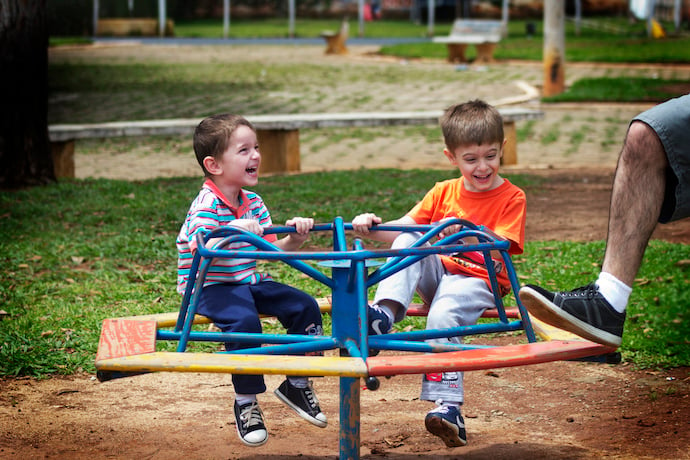A prospective parent visited my school recently and walked into my hallway to see students lying in the hallway surrounded by Solo cups, sprawled out on the carpet, and jumping around in anticipation. As I approached, she gave me a bit of a bemused look and asked what was going on. I responded, “We’re playing.”
Now I don’t know what the takeaway was for this parent, but my answer wasn’t meant to be glib. I take play very seriously in my classroom. During this lesson, students use Sphero robots to knock down solo cup towers. As I hear the cheers and groans coming from all corners of the hallway, serious play is making my students more confident and resilient.
Play-based Learning is nothing new in the education world, however in my experience it is still under-appreciated. Powerful in subtle ways, play is one of the creative literacies that can quietly empower students and expand their imaginative scope. While firmly at home in physical education or art classes, I have found that it is also a natural fit for Computer Science and innovation curriculums.
What makes play serious, then? By nature, play is low stakes and has a low barrier to entry. As a final crescendo to my robotics unit, students build a miniature golf course out of cardboard and recycling bin castoffs. Not only are the materials familiar, modular, and easy to manipulate, but the Kindergarten-esque vibe in the room puts many at ease. This low stakes environment of play can disproportionately benefit anxiety prone students or students with learning differences.
As they work through what is possible with paper towel rolls and duct tape, without knowing it, students are reducing their affective filter. Research has shown that affective variables such as anxiety, self-confidence, and boredom can really affect intake of new information. When students are in playful learning mode, these variables are lessened, and they are more open to processing new ideas. During my lesson, if their program doesn’t put the robot where students are intending, due to the low stakes environment they feel freer to begin again from square one.
Serious play can also be a valuable introduction to iterative processes like the engineering design cycle. One influential supporter of play based learning is Mitch Resnick, founder of the Lifelong Kindergarten research group at MIT. From consulting LEGO on the development of their Mindstorms robotics platform to creating the Scratch programming language, Resnick has been a champion of the cognitive benefits of kindergarten for all. In a 2007 paper, he introduced the Kindergarten approach cycle. The approach is a cycle that asks students to imagine, create, and play. The cycle then moves on to sharing, reflecting, and back to imagining, I have a poster of this cycle on the wall in my room and it informs many aspects of my curriculum.
Recently, we were working on learning computational abstraction, which can be tricky for 7th graders. Before moving on to more traditional instruction, I first asked students to create digital paintings that were an abstraction of an original. As students shared out their designs, I encouraged everyone to continue altering their paintings based on the feedback. After the class came to an end, some students told me they wanted to continue working on their paintings at home, which is always great to hear. Throughout our unit, I’ll return to this activity frequently when they are trying to wrap their heads around writing JavaScript programs with functions and parameters.
While pioneers like Mitch Resnick have advanced the importance of play in the Computer Science classroom, aspects of play are powerful in many contexts. When an English teacher at my school began using a game called Socratic Smackdown to teach a Socratic Seminar, she found that student participation increased – especially from boys. Another Elementary Science teacher uses a unit on Rube Goldberg devices to teach an introduction to physics in an elementary classroom.
While there is a constant pressure in education to remain faithful to content and standards, the time spent imagining and playing is certainly not a waste of time. As the pace of technology increases, these creative literacies could enable students to be flexible while navigating platforms not yet invented. It is certainly possible that play may turn out to be one the best teachers students have.
Learn More
Sphero
LEGO Mindstorms
https://www.lego.com/en-us/mindstorms

